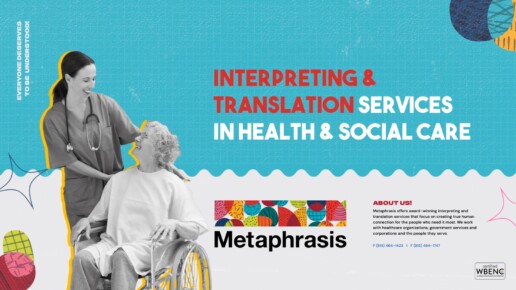Interpreting and Translation Services in Health and Social Care
Effective communication is essential in health and social care settings, ensuring that patients and clients receive the best possible support. However, language barriers often pose significant challenges, especially in diverse communities where individuals may not speak the predominant language fluently. This is where interpreting and translation services play a crucial role.
In this blog, we will explore the importance of interpreting and translation services in health and social care, the role of Metaphrasis in providing these services, and how they contribute to better patient outcomes and overall care experiences.
The Importance of Language Access in Health and Social Care
Language barriers in health and social care can lead to miscommunication, misdiagnosis, and inadequate treatment. Patients and clients need to understand their conditions, treatment options, and rights. Likewise, healthcare professionals and social workers must accurately comprehend the needs of the individuals they serve.
Interpreting and translation services ensure that:
- Patients receive accurate diagnoses and appropriate treatments.
- Informed consent is properly obtained and understood.
- Social services can adequately support individuals in need.
- Healthcare providers comply with legal and ethical obligations.
Types of Interpreting Services in Health and Social Care
- On-Site Interpreting
On-site interpreting involves a trained professional physically present during a healthcare or social service interaction. This is particularly useful in:
- Emergency medical situations
- Mental health consultations
- Social service assessments
- Court or legal-related proceedings
On-site interpreting allows for real-time, accurate communication while considering non-verbal cues, which can be crucial in sensitive conversations.
- Telephone Interpreting
Telephone interpreting provides immediate access to language support when an on-site interpreter is unavailable. This service is often used in:
- Emergency rooms
- Helplines and crisis support
- Follow-up medical consultations
Though telephone interpreting lacks visual cues, it remains an effective and flexible option for immediate language support.
- Video Remote Interpreting (VRI)
Video remote interpreting combines the advantages of on-site and telephone interpreting. It enables interpreters to see facial expressions and body language while providing remote assistance. VRI is particularly beneficial for:
- Sign language interpreting
- Situations where physical presence is impractical
- Rural or underserved healthcare facilities
The Role of Translation in Health and Social Care
Translation services focus on converting written materials from one language to another while maintaining accuracy and cultural sensitivity. These services are crucial for:
- Patient records and medical histories
- Consent forms and legal documents
- Educational brochures and patient instructions
- Social service applications and guidelines
Accurate translation ensures that individuals understand medical procedures, rights, and responsibilities, reducing risks associated with miscommunication.
Challenges in Providing Interpreting and Translation Services
- Shortage of Qualified Interpreters and Translators
Healthcare and social care sectors often struggle with a lack of certified professionals in various languages. Addressing this shortage requires investment in training programs and professional development.
- Confidentiality and Ethical Concerns
Interpreters and translators handle sensitive patient information, making confidentiality a top priority. Organizations must enforce strict ethical guidelines to protect patient privacy.
- Cultural Sensitivity
Beyond language, cultural nuances play a significant role in communication. Misunderstanding cultural norms can lead to discomfort or mistrust between patients and service providers.
- Cost and Accessibility
Providing high-quality language services requires funding, which may be limited in some healthcare and social service organizations. Implementing cost-effective solutions such as digital interpreting platforms can help address this challenge.
The Future of Language Services in Health and Social Care
With advancements in technology, the landscape of interpreting and translation services is evolving. Artificial intelligence and machine learning are improving automated translation tools, though human expertise remains essential for accuracy and cultural relevance.
Investments in training, technology, and policy development will continue to shape the future of language access in health and social care, ensuring equitable services for all individuals, regardless of language barriers.
Conclusion
Interpreting and translation services are indispensable in health and social care settings, bridging communication gaps and ensuring that all individuals receive the support they need. As communities become more diverse, the demand for qualified language professionals will continue to grow. By prioritizing language access, healthcare and social service providers can enhance patient care, improve outcomes, and foster an inclusive environment for everyone.

